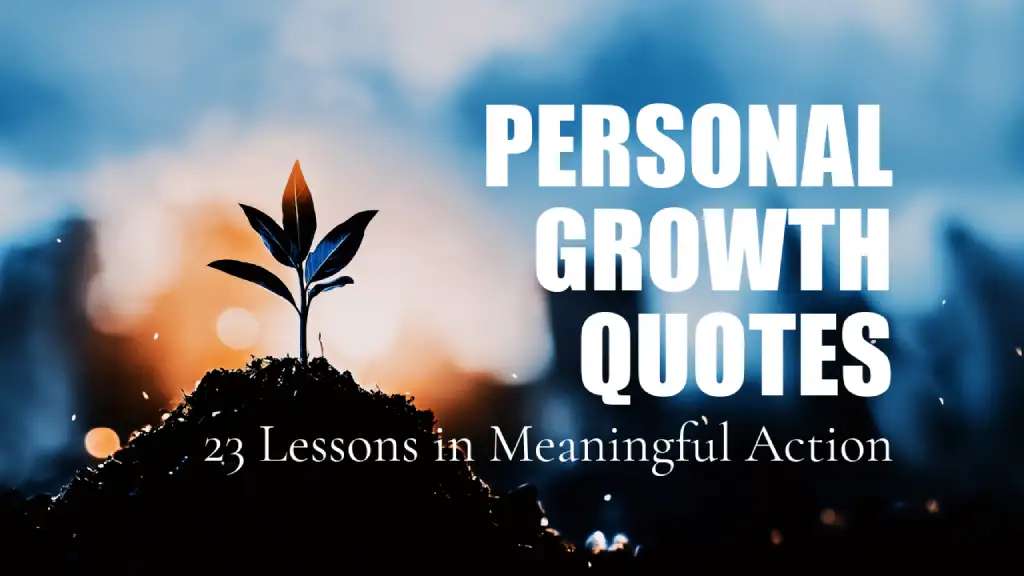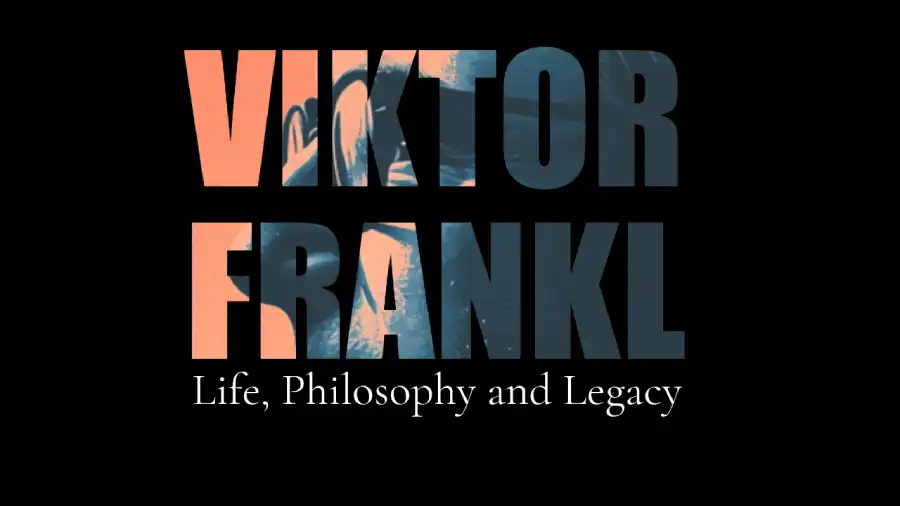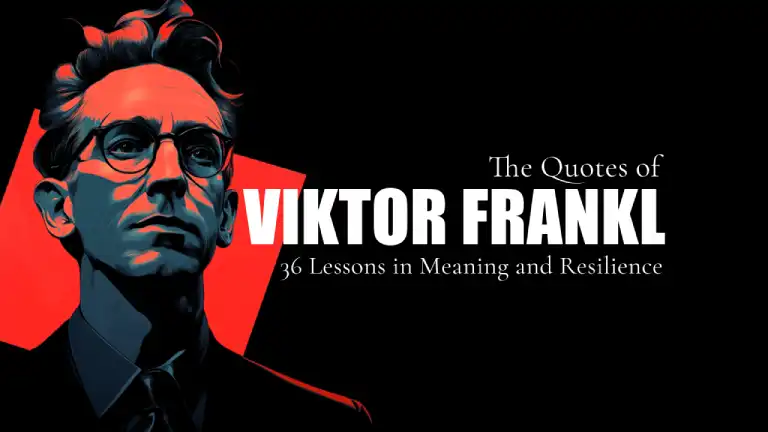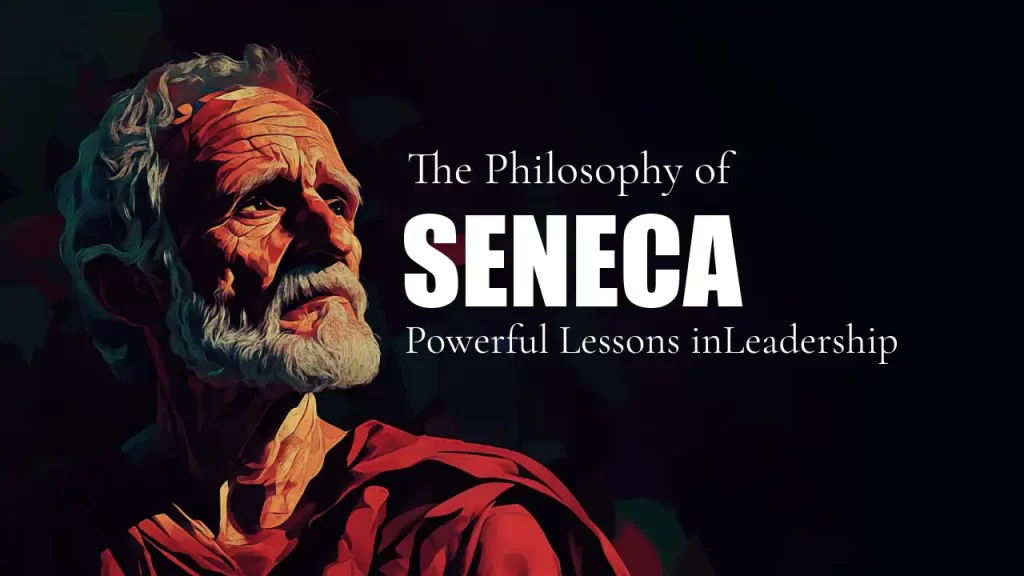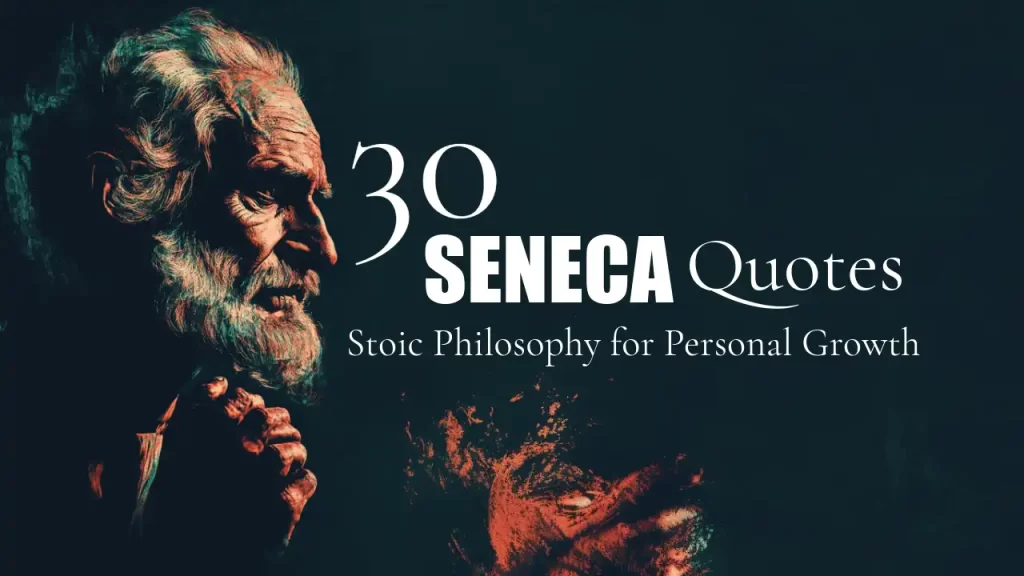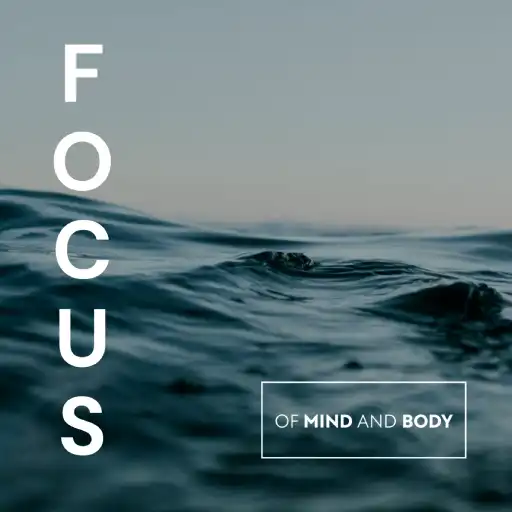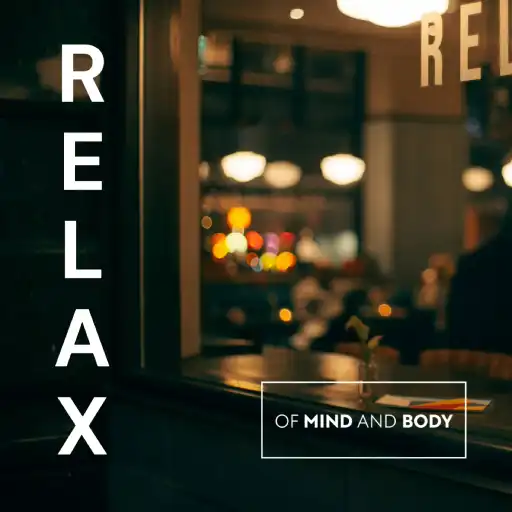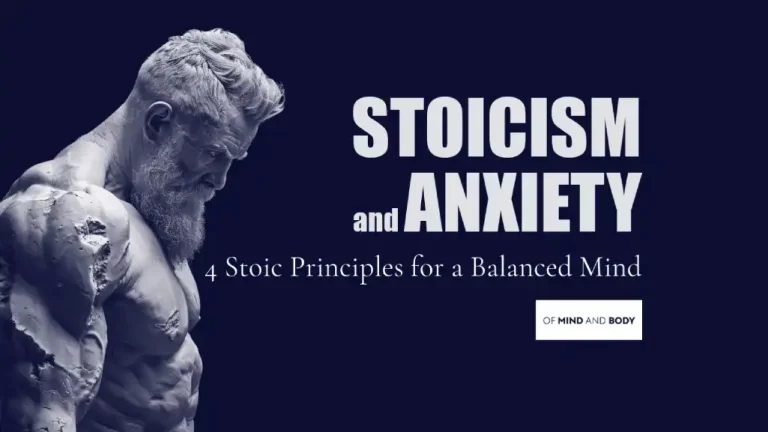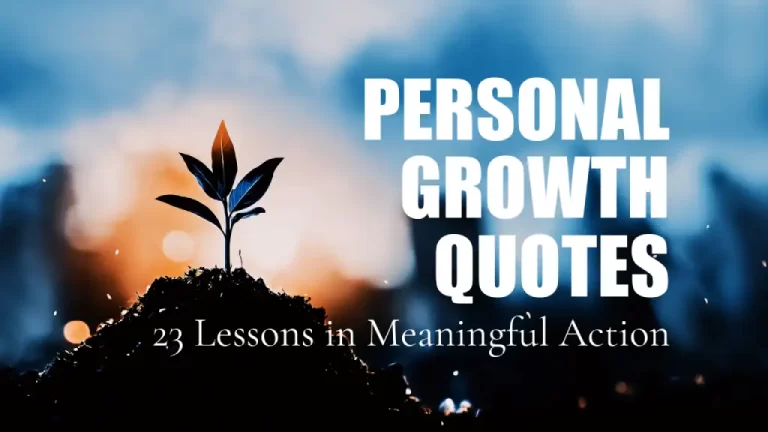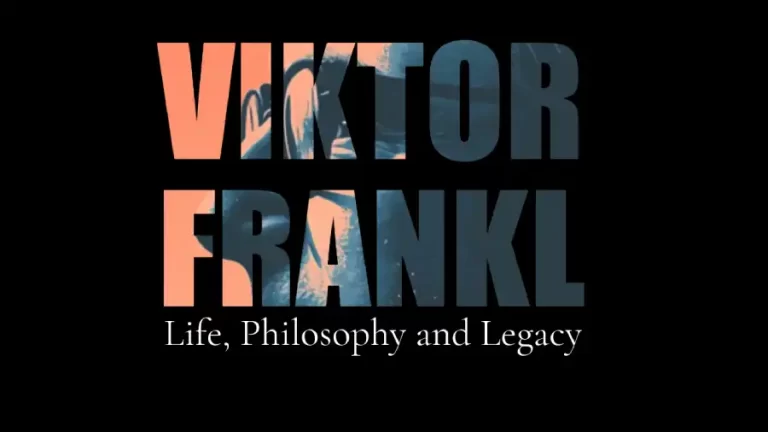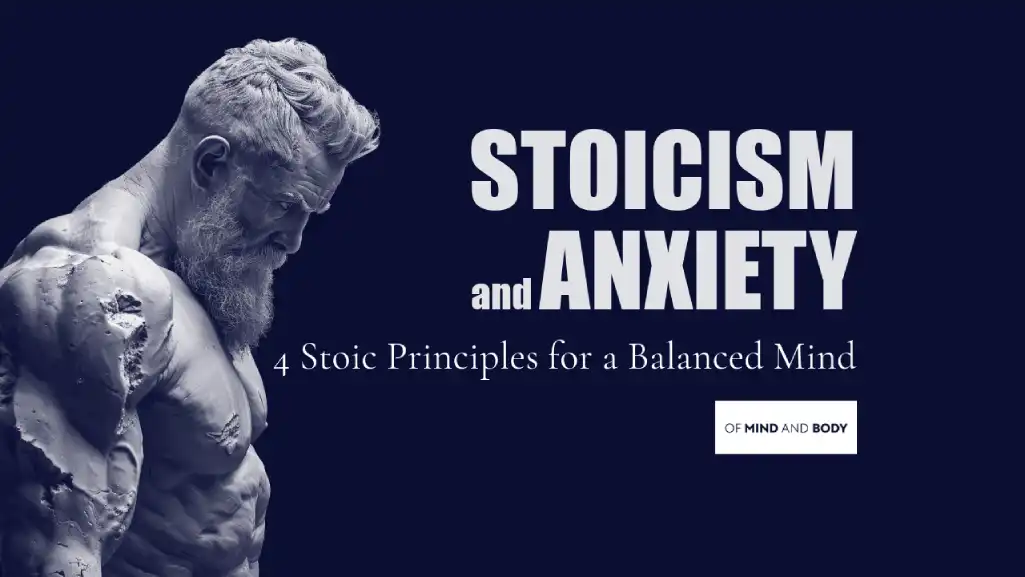
In this article, we’ll explore the connection between Stoicism and anxiety, introducing practical Stoic principles—such as the Dichotomy of Control and Negative Visualisation—that can help you break free from destructive thought patterns. Whether you’re new to Stoicism or searching for fresh ways to manage anxiety, these timeless techniques provide actionable steps toward a more balanced and peaceful state of mind. Read on to discover how Stoicism can help you navigate anxiety and build emotional resilience.
Table of Contents
Disclaimer
The information in this article is intended for general informational and educational purposes only and should not be considered a substitute for professional medical advice, diagnosis, or treatment. If you are experiencing severe anxiety, persistent mental health issues, or are in distress, it is important to seek help from a qualified mental health professional or healthcare provider. Always consult a licensed professional for personalised support and guidance tailored to your specific situation.
If you are in crisis or feel you may harm yourself or others, please contact emergency services or a crisis hotline in your area immediately. You do not have to face these challenges alone—help is available.
Anxiety can feel overwhelming, with racing thoughts and a constant sense of dread draining the joy from life. This struggle is more common than we often admit—and one I know well. For years, anxiety ruled my life until I sought help through Cognitive Behavioural Therapy (CBT). This gave me tools to identify harmful thought patterns and make meaningful course corrections.
Through CBT, I discovered Stoicism—a timeless philosophy with striking similarities to modern therapy. Both focus on controlling our responses to life’s challenges rather than external events. Stoicism and anxiety are deeply connected, as Stoic practices offer practical strategies to break destructive thought loops, foster resilience, and cultivate inner peace.
In today’s fast-paced world, Stoicism is more than relevant—it’s transformative. Its teachings encourage us to approach life with reason, perspective, and acceptance, offering a foundation for managing anxiety in a constructive way. The wisdom of ancient philosophers remains a powerful guide for anyone seeking clarity, balance, and strength in the face of life’s demands.
Understanding the Problem
What is Anxiety?
As described by the National Institute of Mental Health:
“Feeling anxious is a normal part of life. Many people worry about things such as health, money, school, work, or family. But anxiety disorders involve more than occasional worry or fear. For people with these disorders, anxiety does not go away, is felt in many situations, and can get worse over time.“
Anxiety manifests as a sense of unease, worry, or fear, often accompanied by physical symptoms like a racing heart, shallow breathing, or muscle tension.
At its core, anxiety thrives on uncertainty and the tendency to dwell on worst-case scenarios, creating a mental environment that feels overwhelming. While everyone experiences anxiety to some degree, chronic anxiety can feel like an ever-present storm cloud, casting a shadow over even the most positive moments.
How Does Anxiety Affect People?
Anxiety can profoundly impact a person’s mental, emotional, and physical well-being. It can trap individuals in a cycle of overthinking, where every thought feeds into the next, escalating concerns that may have little basis in reality. This cycle often leads to sleepless nights, impaired concentration, and feelings of helplessness.
Physically, chronic anxiety can take a toll on the body, contributing to fatigue, digestive issues, and even long-term health problems.
Socially, it can lead to withdrawal and isolation, as those affected may struggle to articulate their feelings or fear being judged.
Stoic Principles to Combat Anxiety
Stoicism offers practical tools to manage anxiety by reshaping how we perceive and respond to challenges. By grounding ourselves in reason, acceptance, and perspective, we can begin to loosen anxiety’s grip and cultivate a more serene and balanced outlook. Next we will look at four powerful Stoic principles that offer profound guidance for this journey:
- The Dichotomy of Control
- The View From Above
- Accepting Fate (Amor Fati)
- Negative Visualisation (Premeditatio Malorum)
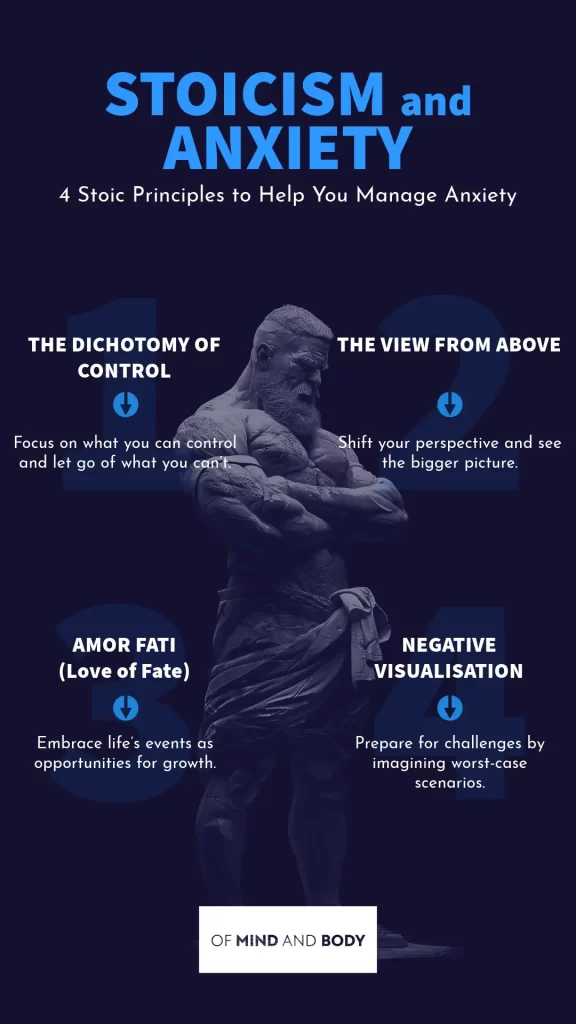
The Dichotomy of Control
“He suffers more than necessary, who suffers before it is necessary.”
Seneca
At the heart of Stoicism lies the Dichotomy of Control, the idea that life is divided into two categories: things we can control and things we cannot. Anxiety often stems from focusing on the uncontrollable—other people’s opinions, future outcomes, or random events. By shifting our attention to what we can control, such as our actions, thoughts, and responses, we reduce unnecessary suffering.
This principle teaches us to stop expending energy on “what ifs” and instead embrace the present moment. When applied consistently, it dismantles the root causes of anxiety by reframing our perspective and reminding us that worry cannot change what lies beyond our control. The result is a calmer, more focused mind, better equipped to navigate life’s uncertainties.
The View from Above
The Stoic principle of “The View from Above” can be particularly helpful for managing anxiety.
This practice involves visualising your situation from an elevated perspective, seeing the vast tapestry of life and how we are just one part of a larger whole. By adopting this bird’s-eye view, the overwhelming importance we place on social situations can be put into perspective.
It encourages us to realise that the things we feel anxious about can often be blown out of proportion in our minds. These small moments that we amplify in our brains are in reality part of the vast tapestry of life.
When you change your perspective like this you can see that there is a lot more to life than the things you are worrying about. Your fears become less significant in the grand scheme of things moving yourself towards a happier and calmer existence. Literally diminishing the power that your fears hold over you.
Amor Fati (Love of Fate)
The Stoic concept of Amor Fati, or “love of fate,” is another transformative approach to anxiety. While the phrase might suggest forcing yourself to love every hardship, in reality it’s more about cultivating acceptance for the events of life as they are.
Amor Fati encourages us to live in alignment with nature, to see every experience—good or bad—as a necessary part of our journey. In doing so, we transform anxiety into acceptance, creating room for clarity and resilience. When practiced alongside other Stoic principles, it becomes a powerful antidote to the mental battle that anxiety often brings.
Negative Visualisation (Premeditatio Malorum)
Negative visualisation, or Premeditatio Malorum, is a Stoic practice that involves mentally preparing for challenges and setbacks by envisioning them before they happen. Far from being pessimistic, this exercise is designed to build resilience and lessen the impact of potential difficulties. By imagining worst-case scenarios in a controlled and deliberate way, we become better equipped to handle them with composure if they arise.
For example, if you’re anxious about an upcoming presentation, you might visualise everything that could go wrong—technical glitches, forgetting your points, or receiving critical feedback. Instead of allowing these fears to paralyse you, the exercise helps you confront them head-on. Once imagined, these outcomes lose much of their power, as you realise they are neither insurmountable nor as catastrophic as anxiety might suggest.
In the context of Stoicism and anxiety, negative visualisation serves to reduce uncertainty, one of anxiety’s main triggers. By rehearsing possible outcomes, you create a mental safety net, cultivating a sense of preparedness and control.
This practice doesn’t make challenges disappear, but it empowers you to face them with courage, knowing you’ve already navigated them in your mind. It’s a strategy that turns anxiety into an opportunity for growth.
By integrating these Stoic practices into daily life, we can learn to manage the challenges of anxiety with greater ease and balance. The philosophy of Stoicism and anxiety is not about denying or suppressing emotions but rather equipping ourselves with the tools to face them with strength, reason, and perspective.
How do I apply these? Stoic Exercises to Combat Anxiety
Stoicism provides actionable exercises that help to calm the storm of anxiety. By blending awareness, structured reflection, and practical problem-solving, these practices transform how we respond to worry. Here are specific strategies, particularly in relation to mindfulness and journaling, that have worked for me.
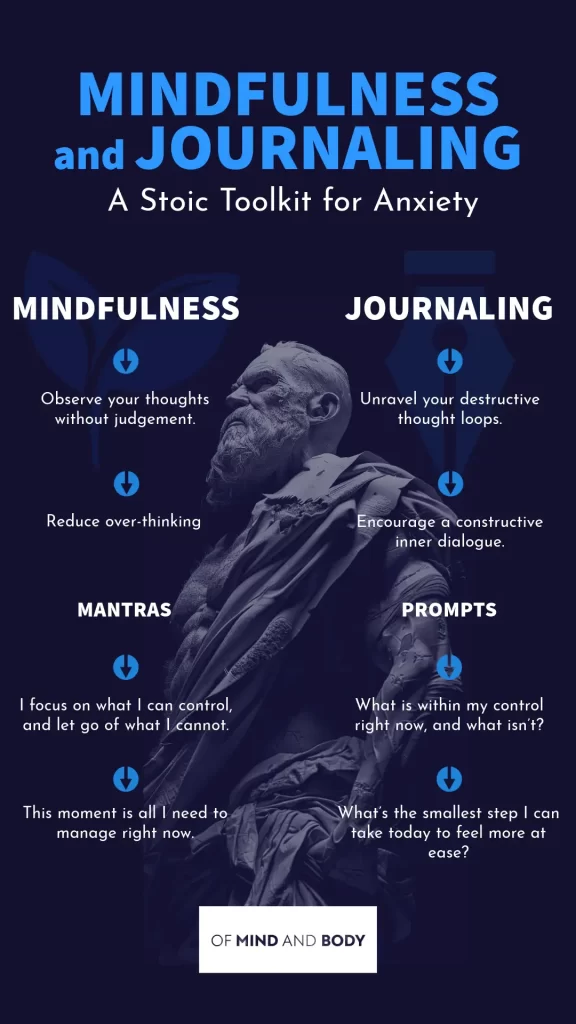
Mindfulness
The first step to addressing anxiety is becoming aware of the thoughts that fuel it. Often, we don’t even realise these thoughts are gripping us, like an invisible hand tightening around our mind. Anxiety thrives on this unconscious cycle of mental chatter. To break free, I practice a Stoic form of mindfulness: consciously pausing and observing my thoughts without judgement.
When anxiety hits, I ask myself:
- What exactly am I thinking right now?
- Is this thought helpful or just noise?
This awareness creates space between me and my emotions, allowing me to decide whether to engage with a thought or let it pass.
A Stoic mantra like “I control how I respond, not what happens” can anchor you during these moments. By observing your thoughts, you reclaim your mental clarity, making it easier to redirect your focus to what truly matters.
Journaling
When anxiety takes hold, thoughts can spiral into a relentless loop of worry and catastrophizing. It’s like being stuck in a mental washing machine (a description I’ve personally felt many times). Journaling is one of the most effective tools I’ve found for breaking out of this exhausting cycle.
Writing your thoughts down externalises them, pulling them out of the chaotic whirl in your mind. It’s as if you’re taking apart a knot, strand by strand, until you can finally see the shape of it. Here’s how I approach this process:
Journal Prompts for Anxiety (Grounded in Stoic Principles):
- What’s troubling me right now?
- What’s the worst that could realistically happen?
- Is this within my control, or is it beyond it?
- If it’s within my control, what action can I take?
- If it’s not, how can I choose to let go and accept it?
- How can I reframe this situation as an opportunity for growth?
- What lesson might this challenge teach me that could strengthen my character?
Unravelling your thoughts like this can give you clarity, so that the next time your mind decides to stress about that thing – you already have a mental off-ramp. Often, I find that the situation isn’t as dire as it felt, and I can devise a practical way forward—or accept it and move on. There really is no need to cycle endlessly through that particular futility spiral.
Stoic Anxiety Quotes
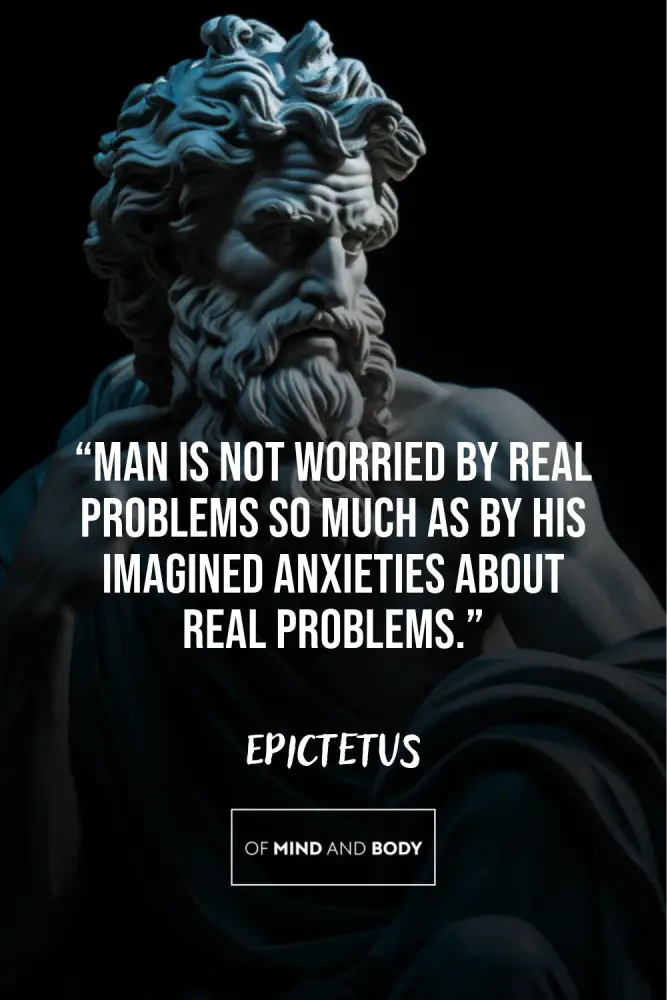

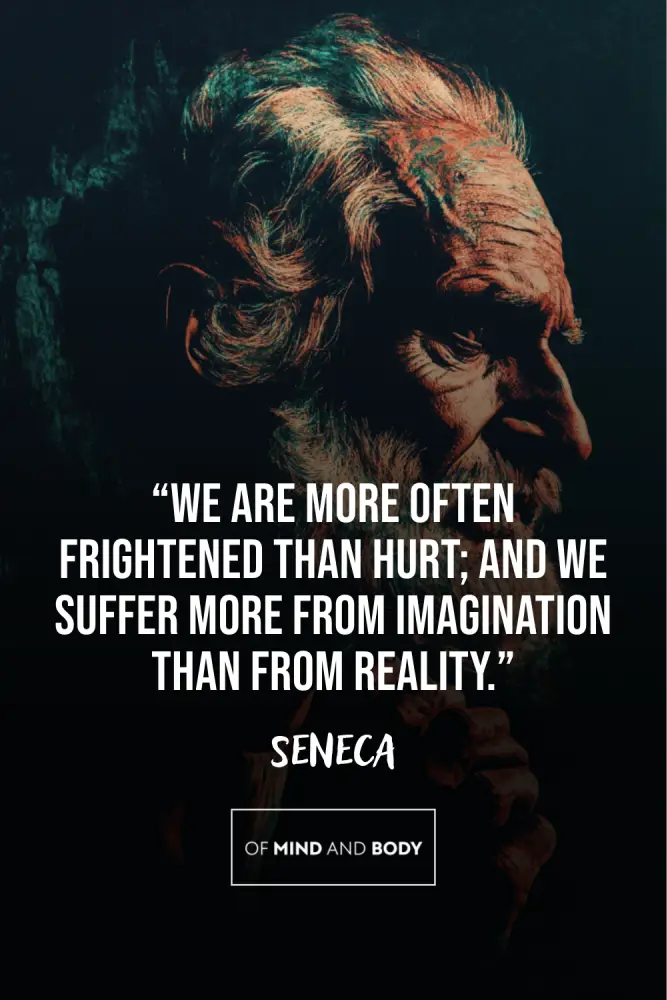
Read more in our Stoic Quotes on Anxiety article here…
Final Thoughts
Whilst anxiety plagues many people – we do not have to be slaves to its pernicious wants. Taking a different approach to how we view our thoughts and feelings is key to battling anxiety. With tools like Mindfulness and Journaling we can turn the tide and loosen anxieties cursed grip.
Mindfulness and Journaling serve as the foundation for building awareness and clarity. Through mindfulness, we become conscious of our thought patterns, identifying what fuels our anxiety. Journaling allows us to unpack these thoughts, offering a structured way to examine and address them. Together, these tools help us break free from destructive thought loops and replace them with constructive action.
The key Stoic principles offer a guide for navigating anxiety:
The Dichotomy of Control helps us to decipher what is within and what is not in our control, and to act accordingly. This principle is key to Stoic thinking and can move us towards a more centered and equanimous existence.
The View from Above can show us that we often exaggerate the worries in our minds, and that in reality there is more to life than our destructive thought cycles.
Amor Fati allows us to reframe our perspective and take advantage of even the most trying of circumstances.
Premeditatio Malorum prepares us for the worst so that we can face adversity head on and with confidence and resilience.
The purpose of Embarking on a Stoic journey is to learn how to live with anxiety in a way that strengthens our character and enhances our quality of life.
Start small: incorporate one principle into your daily routine, reflect on your experiences, and build from there.
Over time, you’ll find yourself better equipped to face life’s uncertainties with calm, clarity, and courage. Stoicism and anxiety may seem like an unlikely pairing, but together, they pave the way toward a more meaningful and balanced existence.
FAQs
Does Stoicism help anxiety?
Yes, Stoicism provides practical tools like focusing on what you can control, reframing challenges, and practicing mindfulness to reduce anxiety and build emotional resilience.
What is the Stoic mantra for anxiety?
A common Stoic mantra for anxiety is “I control how I respond, not what happens.” This reminds you to focus on your actions and let go of what you can’t control.
What do Stoics say about worrying?
Stoics believe worrying is wasted energy. As Seneca said, “He suffers more than necessary, who suffers before it is necessary.” Focus instead on the present and what you can control.
How do Stoic people stop overthinking?
Stoics stop overthinking by practicing mindfulness, journaling their thoughts, and using techniques like the Dichotomy of Control to focus only on what is within their influence.


